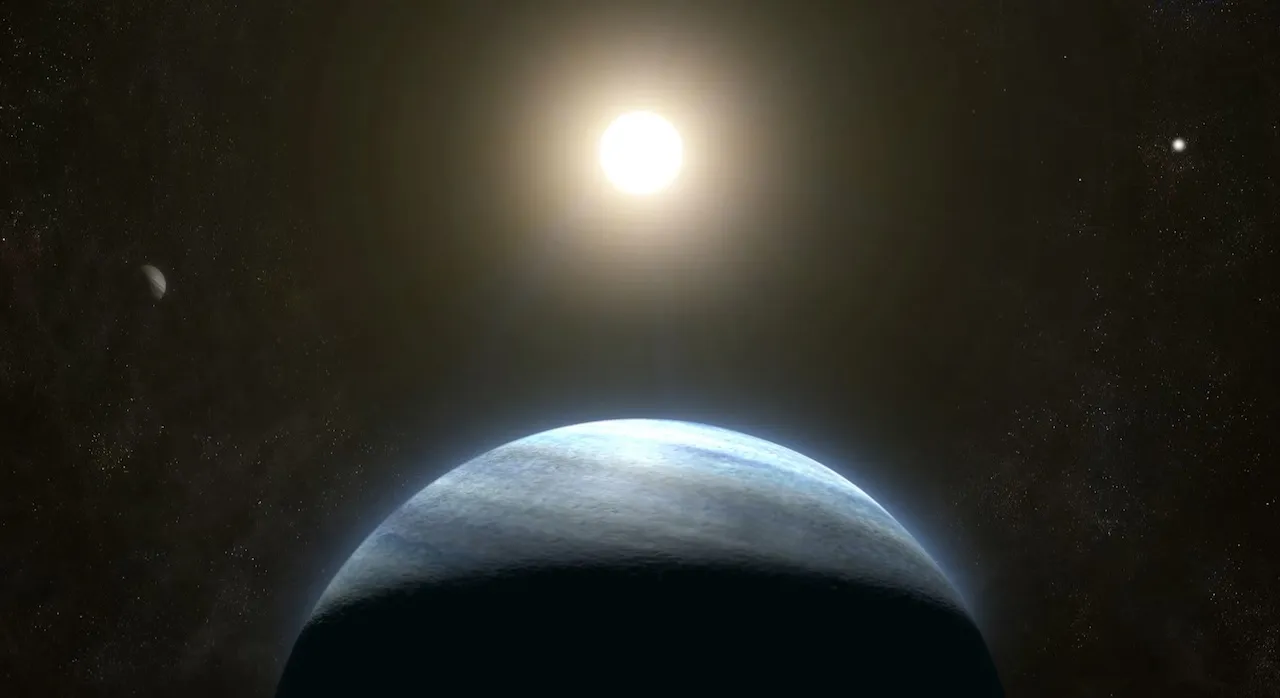Mysterious mini-Neptune discovered in unique planetary system with two Sun-like stars

An international team of astronomers have discovered a mysterious planet that could resemble a smaller version of our own Neptune. The planet dwells in the habitable zone - the region where liquid water could potentially exist - with a potentially moderate temperature and orbits one of two Sun-like stars that also orbit each other.
The system, known as TOI 4633, appears remarkably peculiar. A mysterious planet, called "mini-Neptune," follows an Earth-like 272-day orbit around one of the two stars. However, the orbits of the stars, along with those of the mini-Neptune and a potential sibling planet, are prompting questions about the formation of planetary systems and the long-term stability of such arrangements.
Planet TOI 4633 c, detected using NASA's TESS (the Transiting Exoplanet Survey Satellite), also orbits in the habitable zone. However, it most likely has a Neptune-like thick atmosphere that would rule out the possibility of surface water.
Interestingly, it is likely that a potentially habitable moon orbits the planet. The brightness of this system could make it a prime target in the hunt for exomoons.
Adding another layer of mystery, a second planet candidate with a scorching 34-day orbit around the same star has been hinted at through the radial velocity method. Follow-up investigations will confirm that the sibling planet is really there.
Further investigation of TOI-4633 will help better understand binary star systems, or stellar pairs that orbit each other. It will provide a unique laboratory to test our theories of planetary system formation and shed light on the stability of these extraordinary celestial arrangements.
The study, led by astrophysicist Nora L. Eisner of the Flatiron Institute in New York, has been published in The Astronomical Journal. In addition to the TESS data, this discovery was assisted by archival data that was part of the Washington Double Star Catalog.










